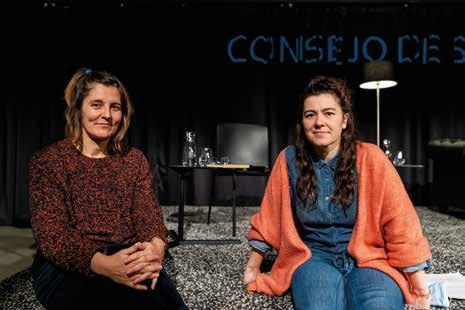CINEMA AND AUDIOVISUALS / ZINEMATEKA APR. 14 > JUN. 17
April 14 > June 17 Wednesday & Thursday Golem Alhóndiga Cinemas
Luis García Berlanga, the chronicler of the 20th century 5€ / 4€ with Az Card
Tickets: cinema ticket offices, Golem Alhóndiga and at golem.es
Following the retrospective on Pier Paolo Pasolini, the Zinemateka kicks off in April with the cycle dedicated to Luis García Berlanga. The transition from one to the other is not arbitrary. Both filmmakers and contemporaries were influenced by Italian neorealism, which emerged after the Second World War with the purpose of showing the social conditions of the time, seeking a more human and committed cinema than in previous periods. Pasolini reflects on a post-war Italy, with an underlined criticism of bourgeois society and consumerism. With Berlanga, we look at that post-Civil War and Francoist Spain, in what is one of the first approaches of Spanish cinema to Italian neorealism. As the filmmaker himself recalled on one occasion, the context was key to his films and the leitmotif of his entire career. It is with good reason that he is known as the chronicler of the 20th century. Berlanga's films are characterised by ensemble casts, music, a humorous and often ironic tone, and genre scenes of the city and the countryside. The cycle opens with Esa pareja feliz (That Happy Couple) (1951), the Valencian director's debut film and the first of his collaborations with the director and screenwriter Juan Antonio Bardem, both of whom had just graduated from the Institute of Cinematographic Investigation and Experience. This was followed by Bienvenido Míster Marshall (Welcome Mr. Marshall) (1953), which won an award at the Cannes Film Festival, and which, although not the director's favourite, has gone down in history as a symbol of Spanish cinema in the 1950s. A parody with which Berlanga undermined the censorship of the time despite depicting a blistering image of the Francoist regime. It would be followed by other films which are also programmed in this cycle, such Calabuch (1956), Los jueves, milagro (Miracles of Thursday) (1957) or Plácido (1961), portraits of the society of developmentalism. El verdugo (The Executioner) (1963), considered his masterpiece, where Rafael Azcona's script and his plea against the death penalty stand out, cannot be missed. La escopeta nacional (The National Shotgun) (1978) and Patrimonio nacional (National Heritage) (1981) are part of the hilarious trilogy with which Berlanga, devoid from the pressure of censorship, acidly reflects the social reality which was beginning to emerge following Franco's death. With La vaquilla (The Heifer) (1985), Berlanga goes back in time to the Spanish Civil War, presented as a comedy, capable of bringing a smile to one of the darkest chapters in Spanish history. The cycle ends with Todos a la cárcel (Everyone off to Jail) (1993), winner of three Goya awards. Once again, Berlanga makes a contemporary portrait of society and a premonition of what has become part of the political class. In summary, a ten film cycle with which the Zinemateka joins the numerous tributes of the ‘Year of Berlanga’ on the centenary of his birth. 41











